23. Ub Iwerks
It seems that in every creative endeavor or cultural phenomenon there is always a person or piece that just essentially needed to be present to make it work. However this person’s vision and artistry oftentimes doesn’t have a significance in how things turn on out after that vital role is filled. They’re the first bridge to great achievements and success, but ultimately not the one that shapes things or leaves a strong imprint on it. This could easily be describe the role of Ub Iwerks, today’s honoree, in the success of Walt Disney. Iwerks was the first great animator in Disney history but he would also be the first to stop animating and the only honoree never to animate on a feature-film.
Ub Iwerks (known as Ubbe Iwwerks until the 20s) was born on March 24, 1901 inKansas City,Missouri about 8 months before the birth of Walt Disney. Not a fan of school he dropped out of high school at the age of 15 and started working at a bank. Approximately 3 years later Iwerks began his career in art by being hired to do air brush work and lighting for the Pesmin-Ruben Commercial Art Studio. This was where the shy, introverted Ub met the outgoing, hardworking Walt Disney. The immediately became friends but where soon laid off, making them decide to make an independent advertising studio named Iwerks-Disney. However Walt got another job to keep the business going and Iwerks didn’t have Walt’s salesmanship, forcing the company to close. Ub Iwerks was the stronger draftsman while Walt was the one with the creativity, salesmanship, and leadership. He soon joined Disney at the Kansas City Ad Company where the worked in advertising and where they first got exposed to the art form of animation. In 1922 they left the company and started a company called Laugh-O-Gram. However after making one film,Alice’s Wonderland, the company went bankrupt making Walt decide to move toHollywoodto pursue a career in the film business and Iwerks to return to the Kansas City Ad company. Disney’s brother Roy also made the move to California and they began the Disney studio. While Walt did much of the early animation himself he realized he wasn’t that good and brought Ub Iwerks out toCaliforniain 1924. Friends fromKansas City including Hugh Harman, Rudolph Ising, Rollin Hamilton, and eventually future Warner Brothers director Friz Freleng also came out. At first they were working on the Alice Comedies, which combined a live-action girl with a cartoon world, by 1927 they had begun making cartoons with a character called Oswald the Lucky Rabbit. While Hugh Harman was the personality animator in the studio and the first one to put at least a bit of real thought process into the animation Iwerks was the best draftsman and the one who did the most footage. Around the same time Iwerks got a young assistant who formerly worked at an ice cream shop in the area named Les Clark, who would later become a great animator and would stick with the studio for almost 50 years. No one, however, knew what the studio was about to be in store for. In February 1928 Walt Disney took a trip to New York to negotiate higher fees per short but instead was told by Charles Mintz that he would take Oswald and most of the animators at the studio away from him if he didn’t accept lower pay. The animators were already under contract with Mintz and Walt felt betrayed. He refused to accept lower pay therefore he lost his character and most of the studio. However Iwerks stayed and wasn’t under contract with Mintz. Secretly Walt and Ub began working on a cartoon featuring a new character named Mickey Mouse. Even if Disney came up with the idea it was Iwerks who came up with the final design and characterization of the character. He even animated virtually all of the footage in the first 3 Mickey cartoons, including Walt’s breakout success short and the first sound cartoon Steamboat Willie. The character became a huge success immediately and was soon an international phenomenon. Iwerks was also very fast at animating Mickey and was documented doing an unheard of 700 drawings in one day. He also animated almost all of the footage in the first Silly Symphony, the Skeleton Dance. However in 1929 many talented animators fromNew Yorkincluding Norman Ferguson and Ben Sharpesteen came to the Disney studio and introduced many innovations to the Disney studio. Also history between Walt and Ub was beginning to have drawbacks in their working relationship. Since he had seen Walt’s struggles and limitations of an artist Iwerks wasn’t blown away by his boss the way many of his peers were and was resentful of him in a way the others were not. For example he wasn’t happy when Walt would retime his X-sheets or tell him to only do the key drawings and to give his assistants the inbetweens. To everyone’s surprise and shock, especially the head of the studio, in January 1930 Ub Iwerks left the Disney Studio to start his own studio. Since he had trouble expressing his emotions to Walt an easy exit that made him not have to deal with his boss’s frustrations was a great deal. Over a period of six years Iwerks headed his own studio and did three cartoon series (Flip the Frog, Willie Whooper, and Comicolor Cartoon Fables) in that timeframe. Great animators such as Grim Natwick and Shamus Culhane were working at the studio as well as future Warners director, then-cell washer Chuck Jones. However, Ub Iwerks lacked the skills that were making Walt Disney a bigger success everyday. He didn’t want to adapt to the innovations in cartoons that were occurring in the 1930s, wasn’t interested in improving the quality of his cartoons, wasn’t that creative, didn’t care that much about running the studio and most importantly didn’t have a great understanding or appreciation for story and character. While the quality of the Disney cartoons in all aspects got drastically better each year in that time period Iwerks’s cartoons stayed relatively the same. By the time Iwerks studio closed Disney was well underway in the production of Snow White and the Seven Dwarfs, the first animated feature film ever made inAmerica. Ironically the things Iwerks lacked as a filmmaker (a drive to get better, great storytelling, understanding of what makes a great film, and having the emotions of the characters drive the story) were the most important things in making Snow White a great movie and an incredible success. With the help of director and production manager Ben Sharpesteen he was rehired by Disney on September 9, 1940 as a technical director. However Ub’s friendship with Walt didn’t return and the two men virtually never spoke again. Disney left Iwerks alone and the later man worked on many technical innovations by himself. In regards to animation his two greatest technical innovations were developing the technology to combine animation and live-action originally used for the Three Cabelleros and the Xerox System, a machine that took drawings and automatically inked them and put them on cells(it was first used for the short Goliath 2 in 1960 but it made its debut in a feature film in One Hundred and One Dalmatians in 1961.) He never animated on his second stint but it has been discovered through deep research that he did contribute a single drawing to every film he worked on (I haven’t seen any of them but I would love to look at them whenever I can get access to them.) Ub Iwerks died 5 years after Walt in 1971.
Ub Iwerks’s animation isn’t timeless the way Bill Tytla’s and Ward Kimball’s is and he may have not had much of an impact on the creative, story end but he will always be remembered as the first animator in Disney history. He’s the one that stayed and the one that was the bridge from the old, unsuccessful beginnings of the company to the massive success both commercially and artistically in the studio’s future. I’ve thought about whether or not Disney could have done what he did if Iwerks weren’t there and I’ll be honest I don’t know. What I do know is that he filled that essential role needed to make the difference between being successful and not. Ub Iwerks is a key figure in the history of film and should always be remembered as a great technical innovator as well as the animator who started it all.
Iwerks’s Work
Cinderella(1922)- Animator
Alice’s Wonderland(1923)- Animator, Actor, Cinematographer
Alice’s Day at Sea(1924)- Animator
Alice the Peacemaker(1924)- Animator
Alice Gets the Dutch(1924)- Animator
Alice Hunting in Africa(1924)- Animator
Alice and the Three Bears(1924)- Animator
Alice and the Pioer(1924)- Animator
Alice Cans the Cannibals(1925)
Alice the Toreador(1925)- Animator
Alice Gets Stung(1925)- Animator
Alice Solves the Puzzle(1925)- Animator
Alice’s Egg Planet (1925)- Animator
Alice Loves Out (1925)- Animator
Alice is Stage Struck(1925)- Animator
Alice Wins the Derby (1925)- Animator
Alice Picks the Champ (1925)- Animator
Alice’s Tin Pony(1925)- Animator
Alice Chops the Suey(1925)- Animator
Alice the Jailbird(1925)- Animator
Alice Plays Cupid (1925)- Animator
Alice Rattled by Rats (1925)- Animator
Alice in the Jungle (1925)- Animator
Alice on the Farm (1926)- Animator
Alice’s Balloon Race (1926)- Animator
Alice’s Little Parade(1926) – Animator
Alice’s Mysterious Mystery (1926)- Animator
Alice’s Orphan (1926)- Animator
Alice Charms the Fish (1926)- Animator
Alice’s Monkey Business(1926)- Animator
Alice in the Wooly West (1926)- Animator
Alice the Firefigther(1926)- Animator
Alice Cuts the Ice (1926)- Animator
Alice Helps the Romance(1926)- Animator
Alice’s Spanish Guitar(1926)- Animator
Alice’s Brown Derby (1926)- Animator
Alice the Lumberjack(1926)- Animator
Alice the Golf Bug(1927)- Animator
Alice Foils the Pirates (1927)- Animator
Alice at the Carnival (1927)- Animator
Alice at the Rodeo(1927)- Animator
Alice the Collegiate(1927)- Animator
Alice in the Alps (1927)- Animator
Alice’s Autorace(1927)- Animator
Alice’s Circus Daze (1927)- Animator
Alice’s Three Bad Egges(1927)- Animator
Alice’s Knaughty Knight(1927)- Animator
Alice’s Picnic(1927)- Animator
Alice’s Channel Swim(1927)- Animator
Alice in Klondike(1927)- Animator
Alice’s Medicine Show(1927)- Animator
Alice the Whaler(1927)- Animator
Alice the Beachnut(1927)- Animator
Alice in the Big League (1927)- Animator
Trolley Troubles(1927)- Animator
All Wet(1927)- Animator
Africa Before Dark(1928)- Animator
Plane Crazy(1928)- Animator, Director
Steamboat Willie(1928)- Animator, Director, Writer
The Gallopin Gaucho(1928)- Animator, Director
The Barn Dance(1929)- Animator
The Opry Horse(1929)- Animator, Director
When the Cat’s Away(1929)- Animator
Barnyard Battle(1929)- Animator, Direcotr
Karnival Kid(1929)- Animator, Director
Mickey’s Choo-Choo(1929)- Animator, Director
Mickey’s Follies(1929)- Animator, Director
The Plowboy(1929)- Animator, Director
Jazz Pool(1929)- Animator, Director
Wild Waves(1929)- Animator
Skeleton Dance(1929)- Animator
Jungle Rhythm(1929)- Animator
Hell’s Bells(1929)- Animator, Director
Haunted House(1929)- Animator
The Merry Dwarfs(1929)- Animator
Puddle Pranks(1929)- Animator, Director, Producer
Mickey’s Yoo-Hoo(1930)- Animator
Little Orphan Willie(1930)- Animator, Director, Producer
The Cactus Kid(1930)- Animator(uncredited)
Reluctant Dragon(1941)- Director on Cartoon Segments(uncredited), Special Effects
Boys Anti-Tank Rifle(1942)- Director
Willoughby’s Magic Hat(1943)- Director
Magic Strength(1944)- Director
Three Caballeros(1944)- Process Effects
Carinval Courage(1945)- Director
Make Mine Music(1946)- Process Effects
Song of the South(1946)- Process Effects
Fun and Fancy Free(1947)- Process Effects
Melody Time(1948)- Special Processes
S0 Dear to My Heart(1949)- Special Processes
Ichabod and Mr. Toad(1949)- Special Processes
Cinderella(1950)- Special Processes
Alice in Wonderland(1951)- Special Processes
Peter Pan(1953)- Special Processes
Lady and the Tramp(1955)- Special Processes
Sleeping Beauty(1959)- Special Processes
Dalmatians(1961)- Special Processes
Mary Poppins(1964)- Special Processes(uncredited)






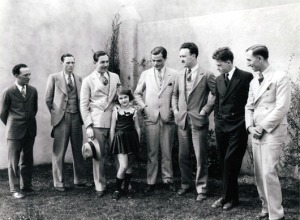

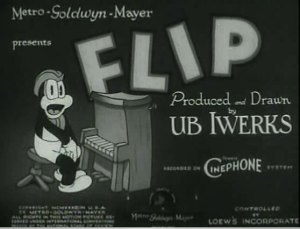
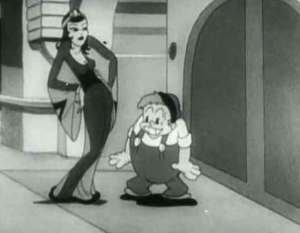
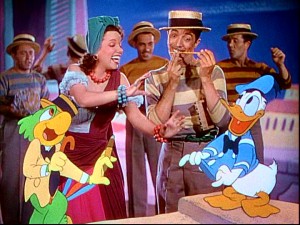

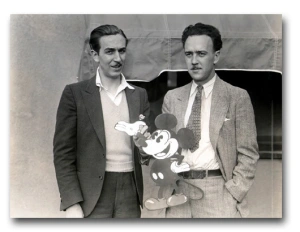
July 5, 2011 at 1:58 pm
Wow. Amazing countdown, seriously. You know what you should do? At the end of the post, list the animators’s work. Yeah, I know you mention throught all the post, but that would be really helpful.
Just a little suggestion. Excellent blog, I wish I’d seen it before.
July 5, 2011 at 6:07 pm
Yes I understand. The credits of the Disney films are less-than-adequate up until Beauty and the Beast so it requires alot of digging and research to even find what characters the directing animators did, much less the normal animators and the assistants didn’t usually get credit. I will try to do as accurate of a filmograpny on each person as possible, although in some cases I might not know every sequecne and/or character the person did but I think I can do close enough.
July 5, 2011 at 10:55 pm
Here’s a link to a documentary of Ub Iwerks.
http://www.thegreat1930s.com/ubiwerks/ub_biography/ub_part1.html
October 26, 2012 at 6:51 am
I am willing to add paragaph spacing to this page as a good will gesture, just to make it easier for humans to read; next time they visit.